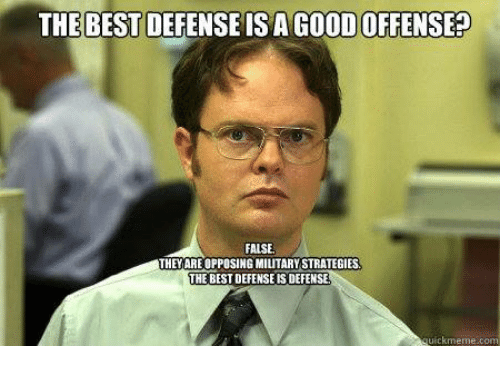
About 2,500 years ago, Chinese military strategist Sun Tzu wrote “The Art of War.” In it, he said, “Strategy without tactics is the slowest route to victory. Tactics without strategy is the noise before defeat.” Tactics and strategy are not at odds with one another—they’re on the same team. (And they have been for many centuries!) Here’s how we define the tactical vs. the strategic:
- Strategy defines your long-term goals and how you’re planning to achieve them. In other words, your strategy gives you the path you need toward achieving your organization’s mission.
- Tactics are much more concrete and are often oriented toward smaller steps and a shorter time frame along the way. They involve best practices, specific plans, resources, etc. They’re also called “initiatives.”
When I first started coaching I had a TACTIC but not necessarily a STRATEGY. I had a coach tell me once, “they need to be more afraid of YOU than they are of the skill.” For me, as a person, I just couldn’t do that. I never wanted the gymnasts to be afraid of me. Afraid of disappointing me? yes. But afraid of me?
No. As a coach I felt that if I can get the gymnasts to trust me and to believe in what we were doing. I wanted them to TRUST me, more than they were afraid of the skill. I SORT OF knew where we were going. I SORT OF had a long term plan. With experience and help I began to form a strategy.
What makes a good strategy?
A solid strategy reflects the core values of your organization. Generally it cannot be done alone. You must get others involved. Your other team coaches, your developmental coaches, the owner/manager of the gym. You should gather input from across the organization to ensure there’s alignment between the strategy you are developing and and other parts of the programs priorities. All strategies should be actionable.
When creating a good strategy, focus on the desired end result (the goal). Your strategy is the foundation for all activities within the organization, and how it’s crafted will guide decision-making as your coaches and teachers work to achieve those goals. For example, if your gym has a goal to have 5 level 10s, your strategy needs to include strong developmental program and offering staff education at training camps, clinics and congresses. You also need to think about how much time in the gym is needed. What will the costs of that be?
What makes a good tactic?
A good tactic has a clear purpose that aids your strategy. It has a finite timeline during which specific activities will be completed and their impacts measured.
A tactic for the gym would be to see what other clubs with a Level 10 team are doing. Map their processes and add your own “spice” to the mix to minimize waste and inefficiencies. The gym can clearly measure the success of the tactic by tracking the progress of the gymnasts as they move up in level.
Overall, the rule of thumb for understanding the difference between strategy and tactics is, “Think strategically, act tactically.”
- Strategy is based on extensive research, planning, and internal reflection. It’s a long-term vision, whereas tactics are short-term actions. For example, if your marketing strategy is to improve your gyms influence and performance in social media, then your tactics might be to determine the best channels for your gym and the most effective messages for your audiences. Strategies CAN change to adapt to new internal or external factors in an organization, but these changes shouldn’t be made lightly. Tactics can change based on the success of your strategy. It’s much easier to adjust tactics to course-correct than it is to overhaul your strategy, so make sure your strategic planning is thorough.
- Strategy and tactics work together as means to an end. If your strategy is to climb a mountain, one key component of your strategy might be to decide which side of the mountain you should climb. Your tactics would be the gear you’d buy, who you’d bring with you, your complete trip plan, how long it would take to get there, what season you’d go in, and so on. A strategy without tactics won’t ever be executed or help you achieve your goals.
- Strategy and tactics always have to be in-line with one another. You might be really be great teaching a particular skill (i.e. a tactic), but it’s only worth pursuing if it aligns with your long-term strategy. Thus, your strategy should inform which tactics your program will execute.
- The best strategy and tactics still won’t cover EVERYTHING. Because resources are finite, choosing the right strategy and corresponding tactics ensures your efforts are directed toward achieving your vision in the most efficient manner possible.





